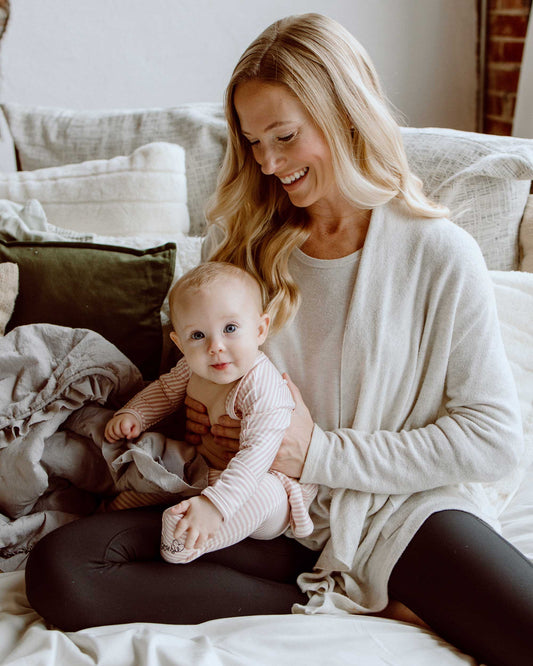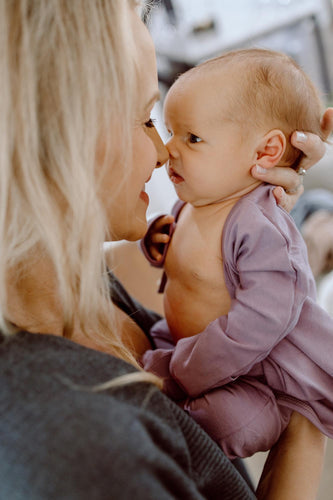Share
Story Time and Skin-to-Skin Contact
silky rani
Are you looking for the perfect routine to start before nap time and bedtime? Grab a book, (or a few!) your favorite Bonsie outfit, and get close with your baby through skin-to-skin contact and the precious bonding experience that story time provides.
These two acts of love have been thoroughly researched, and the positive results need to be broadcasted to the world.
Here’s a review of why skin-to-skin contact is so important. Skin-to skin contact helps to:
- Calm and relax both mother and baby
- Regulate baby’s temperature, heart rate, and breathing, which helps them better adapt to life outside the womb
- Stimulate the release of vital hormones to support breastfeeding
- Provide protection against infection
- Aid in attachment and bonding with the parent or caregiver, which is HUGELY important for baby’s ability to thrive
Now, combine these incredible benefits with the advantages of reading out loud to your baby, and you’ve got the total package of parenting at its finest.
Babies are NOT too young to be read to; their brains are developing at a rapid pace, and even though they can’t talk yet, they can listen, sense your mood, and are always learning.
Mem Fox, an author, teacher, international literacy consultant, and mother, said the following in her book Reading Magic: Why Reading Aloud to Our Children Will Change Their Lives Forever:
“The best time to start reading to a baby is the day it is born. The lilting rhythm of a simple bedtime book on that first thrilling, exhausting day is soothing for the tremulous parents and the new child and adds to the bonding between them.” (2001, p. 32)
Start a routine with your baby that you will both cherish, and one that will continue long after they have learned to read themselves. Reading together will forever connect you through every memory associated with each story. It also establishes a time of peace, relaxation, and imagination.
There are many measurable advantages as well. Reading to your baby will support their development by strengthening their memory, their communication skills, listening skills, vocabulary, and understanding of the world around them. Babies who are read to are also more likely to read at an earlier age, be empathetic, social, and curious. (Lewis, 2019)
Most importantly, reading to your baby is a constant reminder of how much they are loved, which helps them to associate learning with feeling safe and having fun. Your baby will become a lifelong reader because they will connect reading with the joyful memories that you helped create.
For the first couple of months your baby will just love to hear the soothing sound of your voice. As soon as they get interested in grabbing things or looking at pictures, choose books that are colorful, rhyme, sing songs, make noises, or are textured.
You don’t have to dedicate hours to this important time; simply take ten minutes before nap time and bedtime to read, snuggle, and get close through skin-to-skin contact. Spend time looking at pictures, pointing out certain objects and colors, and interacting with your baby through the magical gift of story time and togetherness.
Need some book suggestions? Check out some of our favorites here.
Sources:
Lewis, K. N. (Ed.). (2019, August). Reading books to babies (for parents). KidsHealth. https://kidshealth.org/en/parents/reading-babies.html.
Fox, M., & Horacek, J. (2001). Reading magic: Why reading aloud to our children will change their lives forever. Harcourt.
Share
-
Category:
- All posts




